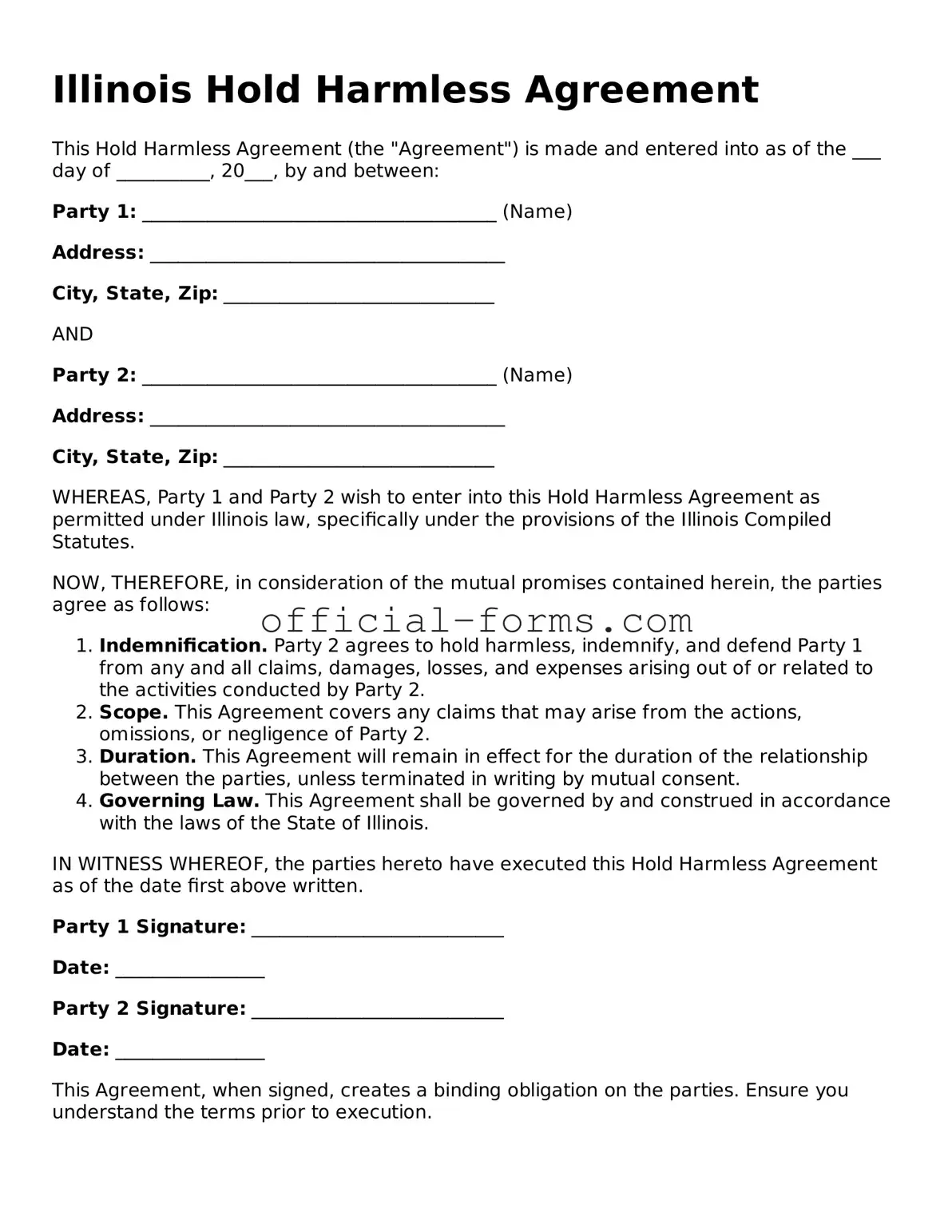Filling out the Illinois Hold Harmless Agreement form can seem straightforward, but many people make common mistakes that can lead to issues later on. One frequent error is not including all necessary parties. It's important to ensure that everyone involved in the agreement is listed correctly. Omitting a party can create confusion and may void the agreement.
Another common mistake is failing to specify the scope of the agreement. The language should clearly outline what activities or situations the hold harmless clause covers. If this is vague, it could lead to misunderstandings about what is protected under the agreement.
Many individuals also overlook the importance of dates. Not providing a clear start and end date for the agreement can lead to ambiguity. This could result in disputes about when the agreement is in effect, which is not ideal for anyone involved.
Signatures are crucial, yet some people forget to sign the form. A signature indicates consent and understanding of the terms. Without it, the agreement may not hold up if challenged later. Always double-check that all required signatures are present.
Another mistake is not providing adequate consideration. In legal terms, consideration refers to something of value exchanged between parties. If this is missing, the agreement might not be enforceable. Ensure that each party understands what they are giving and receiving.
Some people fail to read the entire document before signing. This can lead to signing an agreement that contains terms they do not fully understand or agree with. It’s essential to take the time to read through the entire form carefully.
Additionally, not consulting with a legal professional can be a misstep. While the form may seem simple, having a lawyer review it can help clarify any confusing sections and ensure that it meets all legal requirements. This step can save time and trouble down the line.
Lastly, people sometimes use outdated versions of the form. Laws and regulations can change, and using an old form may not reflect the current legal standards. Always check to ensure you have the most recent version of the Illinois Hold Harmless Agreement form.
